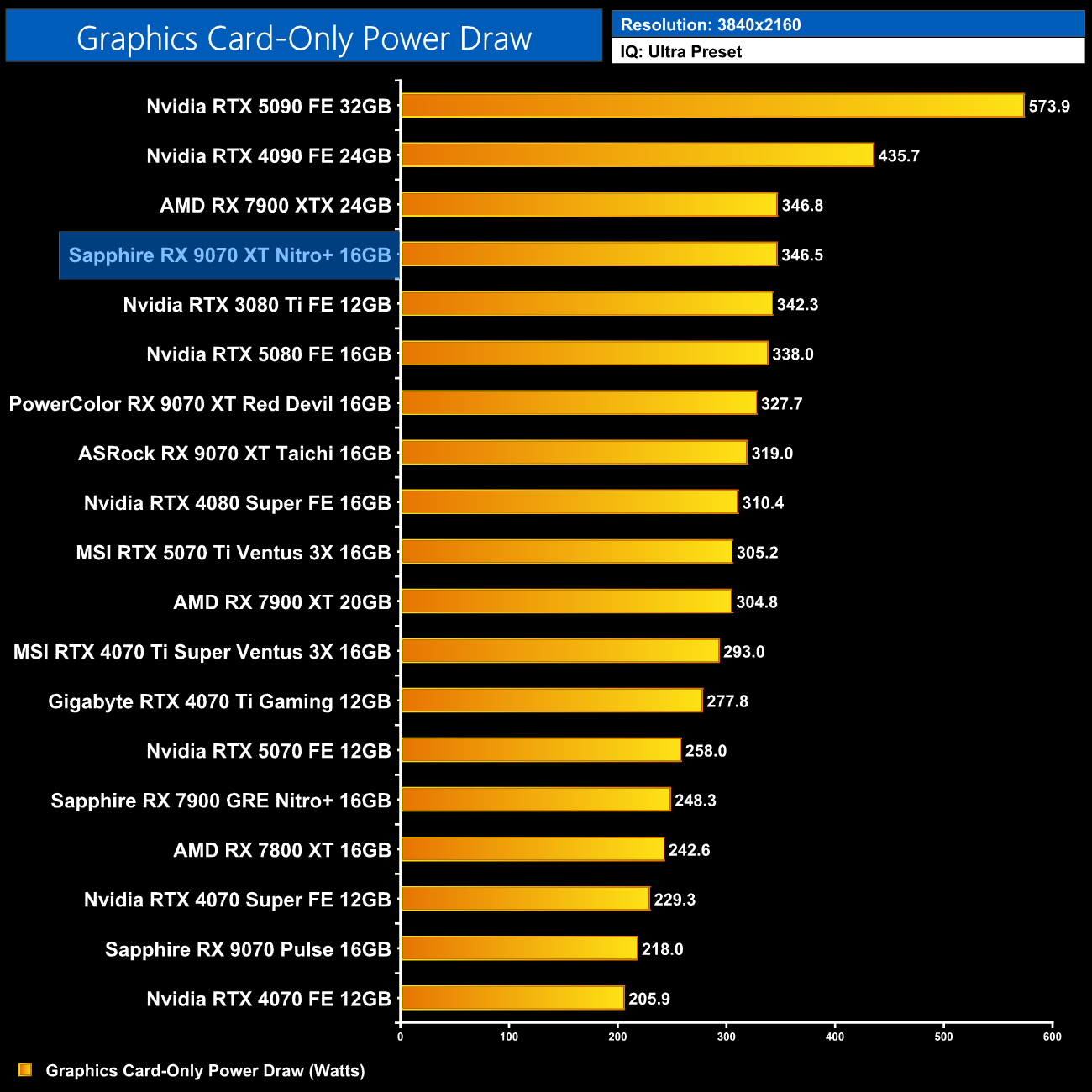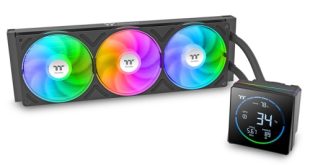Power Draw
We use Nvidia PCAT to measure power draw of the graphics card only, with readings from both the PCIe slot and the PCIe power cables combined into a single figure. We use A Plague Tale: Requiem (4K/2160p) for this testing.
As for power draw, Sapphire rates the Nitro+ with a 330W total board power, but we saw it hitting just below 350W in A Plague Tale: Requiem at 4K, almost 20W more than the PowerColor Red Devil.
Given the Nitro+ also uses the 12VHPWR connector, which has caused more than its fair share of controversy, I also wanted to measure the current flowing over the six 12V wires. Nothing stood out during my testing, with current sitting between 4.4-4.9A, recording just over 28A total. That is completely fine, though Buildzoid did conduct an analysis on his YouTube channel, suggesting that Sapphire has not included any extra failsafe, so if a sub-par cable or connector were to be used, nothing would stop uneven load balancing – as we've seen occur with the RTX 5090, for instance.
However, considering the power draw of the 9070 XT is much lower, there is significantly more safety headroom, and Sapphire told me that the company's ‘engineering teams put the NITRO+ RX 9070 Series through tons of testing to make sure the 12V-2×6 connector is rock solid'.
On top of that, I also used my thermal imaging camera on the power connector and saw temperatures in the mid 60C range around the connector, though the cable itself is even cooler – we also have to factor in that hot air is blowing right over the cable, so that will increase temperatures slightly, but nothing I saw was dangerous or out of spec from my testing.
Performance per Watt
Combining the power draw values shown above with the performance data, we present performance per Watt for each graphics card tested:
The only downside to Sapphire's higher power draw is that it means efficiency is reduced overall, not by much, but there's a 6% reduction in performance per Watt compared to the Red Devil and Taichi.
 KitGuru KitGuru.net – Tech News | Hardware News | Hardware Reviews | IOS | Mobile | Gaming | Graphics Cards
KitGuru KitGuru.net – Tech News | Hardware News | Hardware Reviews | IOS | Mobile | Gaming | Graphics Cards




